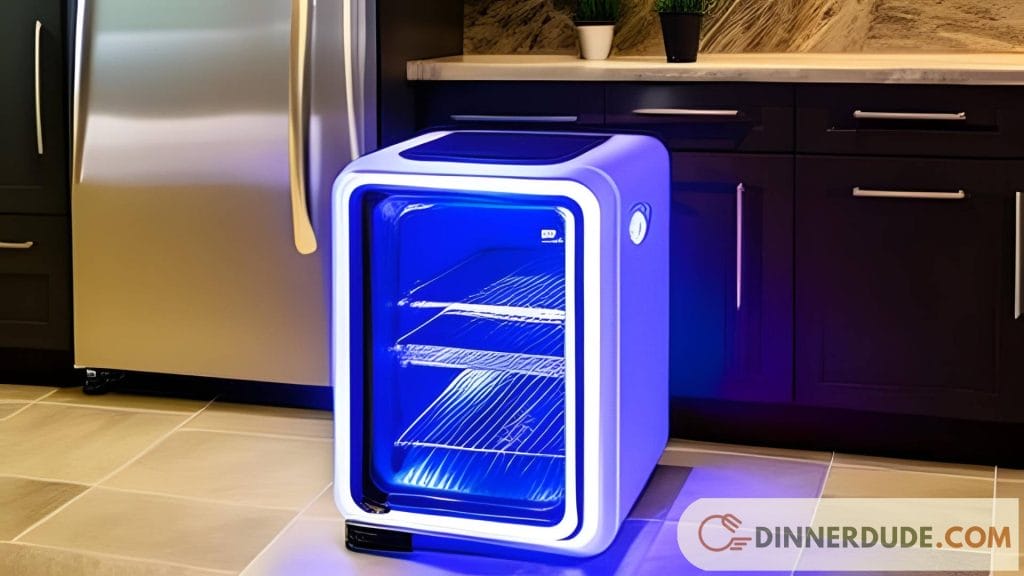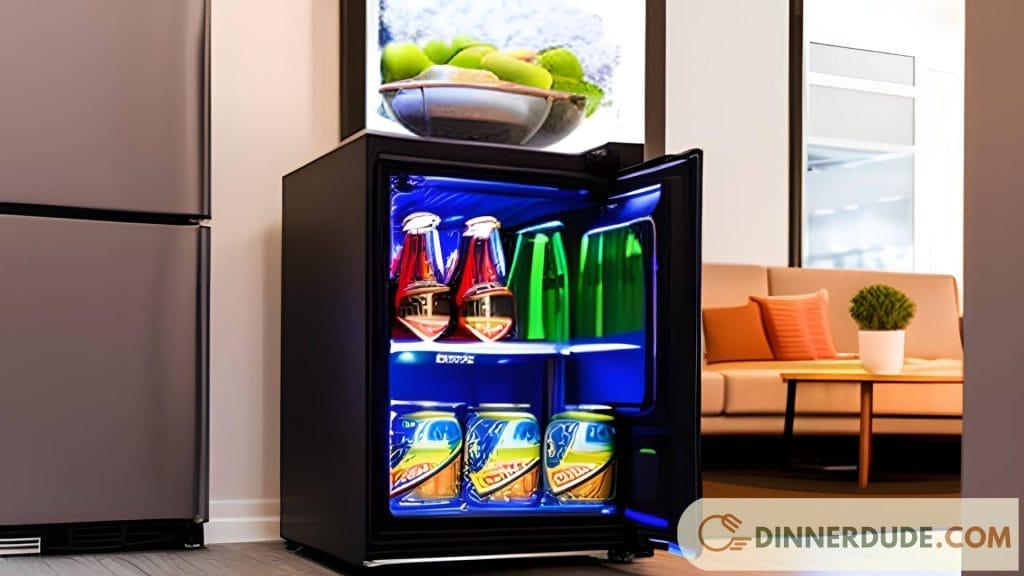Mini fridges with their compact size and convenience, are a popular choice for small spaces like dorm rooms, offices, or tiny apartments. However, an often overlooked aspect of these handy appliances is the need for proper ventilation to ensure efficient and safe operation.
So, Does a mini fridge need ventilation? This article by Dinnerdude explores the importance of ventilation for mini-fridges, the specific requirements based on different models, and tips for optimizing ventilation to prolong the lifespan of your appliance.
Understanding Mini Fridge Operation and Ventilation

Mini fridges are compact and convenient appliances often used in dorm rooms, offices, or small apartments. However, like their larger counterparts, they also require proper ventilation to function efficiently and safely.
How a Mini Fridge Works
A mini fridge operates using a compressor that circulates refrigerant through condenser and evaporator coils. This process removes heat from the inside of the fridge and releases it outside, thereby cooling the interior.
For this heat exchange to occur effectively, the fridge needs adequate ventilation.
The Role of Ventilation in Refrigeration
Ventilation is crucial for a mini fridge as it allows the heat generated during the cooling process to dissipate. Without sufficient ventilation, the fridge can overheat, leading to inefficient operation, increased energy consumption, potential damage to the appliance, and even a risk of fire.
Does a mini fridge need ventilation?

While all mini fridges need ventilation, the specific requirements can vary based on the design and model of the fridge.
Space Around the Mini Fridge
As a general rule, mini fridges should have at least a few inches of clearance on all sides, especially at the back where the majority of heat is expelled.
This space allows for adequate airflow and helps to prevent overheating. It’s also important not to block the front of the fridge, as many models draw in air from the front for cooling purposes.
Considerations for Built-in Mini Fridges
Some mini fridges are designed to be built into cabinetry or under counters. These models typically have a front ventilation system that expels heat forward, rather than at the back or sides.
However, even these fridges need some clearance to ensure proper airflow and prevent overheating.
Tips for Optimizing Ventilation for Your Mini Fridge

Beyond understanding the need for ventilation in mini fridges, it’s also beneficial to know how to optimize this ventilation. This involves strategic placement of the fridge, regular maintenance, and awareness of signs of inadequate ventilation.
Strategic Placement of Your Mini Fridge
The location of your mini fridge can significantly impact its ventilation. As mentioned earlier, leaving space around the fridge is crucial, but it’s also important to consider the ambient temperature of the room.
Placing the fridge in a cooler area away from direct sunlight or heat-producing appliances can help it run more efficiently.
Regular Maintenance and Signs of Inadequate Ventilation
Regular cleaning of the fridge, especially the coils at the back, can improve airflow and prevent overheating. It’s also important to be aware of signs of inadequate ventilation, such as the fridge running constantly, excessive heat from the back of the fridge, or food not being cooled properly.
These signs indicate that the fridge may not be ventilating effectively and may require repositioning or professional attention.
Ensuring adequate mini fridge need ventilation not only involves leaving enough clearance around it but also considering its placement and maintaining it regularly. By optimizing ventilation, you can enhance the efficiency and lifespan of your mini fridge.

In conclusion, while mini fridges are compact and convenient, they do require proper ventilation to operate efficiently and safely.
This involves leaving enough space around the fridge for heat dissipation and considering the specific ventilation requirements of the model. By ensuring adequate ventilation, you can prolong the lifespan of your mini fridge and ensure it operates at peak efficiency.